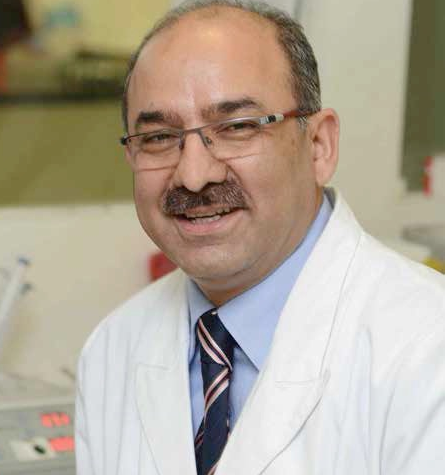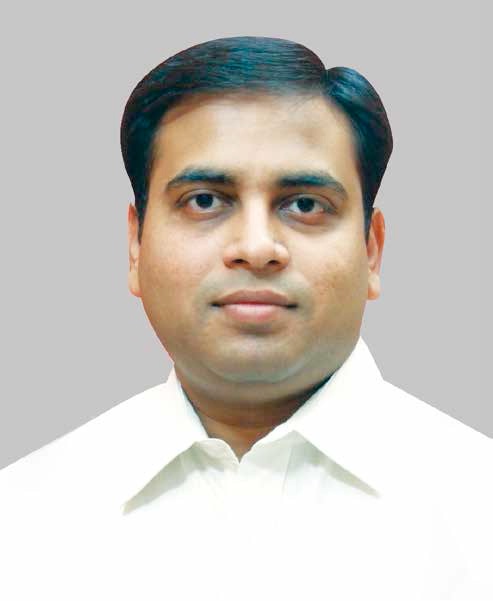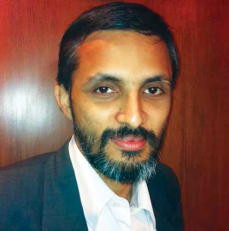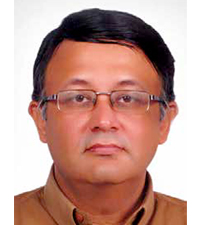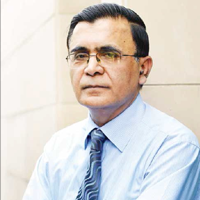
 K Raghava Ram, Director at Crane Global Solutions Limited (CGSL) talks about the growing Indian healthcare market and how RIS/PACS solutions help in improving healthcare delivery.
K Raghava Ram, Director at Crane Global Solutions Limited (CGSL) talks about the growing Indian healthcare market and how RIS/PACS solutions help in improving healthcare delivery.
How do you perceive the growth of the healthcare segment in the IT market?

The Indian healthcare sector is growing at 15 percent CAGR, from INR 4711.68 billion in 2012 to INR 9483.30 billion by 2017. The rising population has led to a per capita increase in healthcare expenditure at a CAGR of 10.3 percent from INR 2583.63 billion in 2008 to INR 3470.82 billion in 2011. This is expected to rise to INR 5317.12 billion by 2015.
This growth is due to greater access to high-quality healthcare and greater awareness of personal health and hygiene. The gaps in healthcare delivery are being filled by technologies like Tele Medicine, Tele Radiology, medical apps and various Government schemes.
Investors are investing in healthcare areas like digital health knowledge resources, electronic medical record, mobile healthcare and hospital information system, which focus on the technological aspect of healthcare delivery.

Are hospitals closer to becoming all-digital by introducing RIS/PACS?
RIS/PACS solutions help the doctors by putting information at the center of healthcare, facilitating seamless capture, storage and retri of patient images and making them available enterprise-wide. The patients image is a click away for the doctors to view and arrive at a diagnosis. Also, while traditional films and scans may be damaged or lost by the patient, thereby impacting treatment, PACS saves all images on the PACS server, thus eliminating this risk and ensuring complete patient care.
The solution completely unifies image management platform and automates task-based clinical productivity, supporting improved care delivery and optimized workflow.
How important is innovation for customers in the growth markets?
Emerging innovations in healthcare delivery, particularly in developing countries, offer insights on how to tackle its rising cost. The innovations are uncovering the patterns for raising productivity, cost cutting, road to patient satisfaction, and visions for stakeholders and leaders across health sectors-public, private, and social.
How do you differentiate your products to your clients? How important is pricing?
We at CGSL offer products built on SAP, open source, IBM stack, Oracle stack and hybrid solutions, for different healthcare segment.
Our solutions core strength lies in its KPI (Key Performance Indicator)- based approach and ability to interface with any third-party application or product used in the hospital.
Our business alliances are our strength, which make our product different and unique.
Pricing plays a major role in healthcare vertical. The mid-sized hospitals, which might be excellent in process and patient care, may not want to invest on IT, infrastructure vis-a-vis on medical equipments.
Please tell us about your RIS/ PACS solutions.
Our product is database agnostic. It is built to leverage any levels of customization with minimal effort, thus minimizing the price burden of customer, while simultaneously accommodating the clients requirements.
Its lies in integrating RIS/PACS from different vendors or integrating HIS with RIS/PACS. It optimizes the complete workflow, decides on the best solution for achieving it, and develops and implement it. Archiving Solutions for Medical Industry is low cost, high performance and very reliable. It has a built-in redundancy, and is scalable, thereby addressing many price points and being a cost-effective solution.
Our PACS solution is the first in the world to offer inbuilt video conferencing, chat, audio, share and FFID technology on an integrated platform. It has an inbuilt support for multisite centers with a global work list and central image store. It is VNA and VNC compliant and offers optimal size images with best quality. It also supports DICOM Waveforms, DICOM Equipment, Mammo CAD, DICOM SR.
Is RIS/PACS here to stay as part of the overall transformation of healthcare?
Yes, the growth in technology is enormous in RIS/PACS space.
What is your prediction for this market in the next decade in India? What are the growth contributors in the industry?
Healthcare is one of Indias largest sectors, in terms of revenue and employment, and the sector is expanding rapidly. The continuous evolution of PACS technology has led to a broadening of its applications, from Tele-Radiology to CAD (Computer-Assisted Diagnosis) and multidimensional imaging. It is evolving to provide access to image data outside the Radiology department to all branches of the hospital. Newer technologies like holographic media and GRID computing are likely to expand PACS-based applications further, improving patient care and enhancing overall productivity.
The market for PACS is expected to reach INR 305.72 billion by 2018. This growth will come largely due to government investing in PACS, spurred by the push to digitize health records and the introduction of the software-as-a-service model, which significantly reduces the up-front cost of implementing PACS.
The growth contribution is primarily by the government to encourage the digitization of healthcare systems, and technological advancements in imaging information technology. In addition, PACS market it is just not limited to radiology but also expanding to oncology, endoscopy and other specialties who are also adopting the systems.
Emerging innovations in healthcare delivery, particularly in developing countries, offer insights on how to tackle its rising cost
With elections around the corner, what are your expectations from the government for this industry?
Health system strengthening, human resource development and capacity building and regulation in public health are important areas within the health sector that the government should focus.
The citizen also expects healthy living conditions, nutrition, safe drinking water, sanitation, education, early child development and social security measures from the government. 80 percent of the healthcare spend in India comes from private sector. A populous country like ours allocates only 20 percent of its annual budget towards healthcare, which is among the lowest in the world. The government should focus increasing the budget allocation for healthcare and making sure that all citizens receive healthcare services and benefits with the use of technology.
With the technology enhancement in every vertical, the hospitals and healthcare providers should make HMIS mandatory for better patient care delivery process. The government run various health schemes to fulfill the objectives of taking healthcare to the citizens. Funds allocated to these schemes could be utilized for healthcare IT and infrastructure development.
Be a part of Elets Collaborative Initiatives. Join Us for Upcoming Events and explore business opportunities. Like us on Facebook , connect with us on LinkedIn and follow us on Twitter , Instagram.



